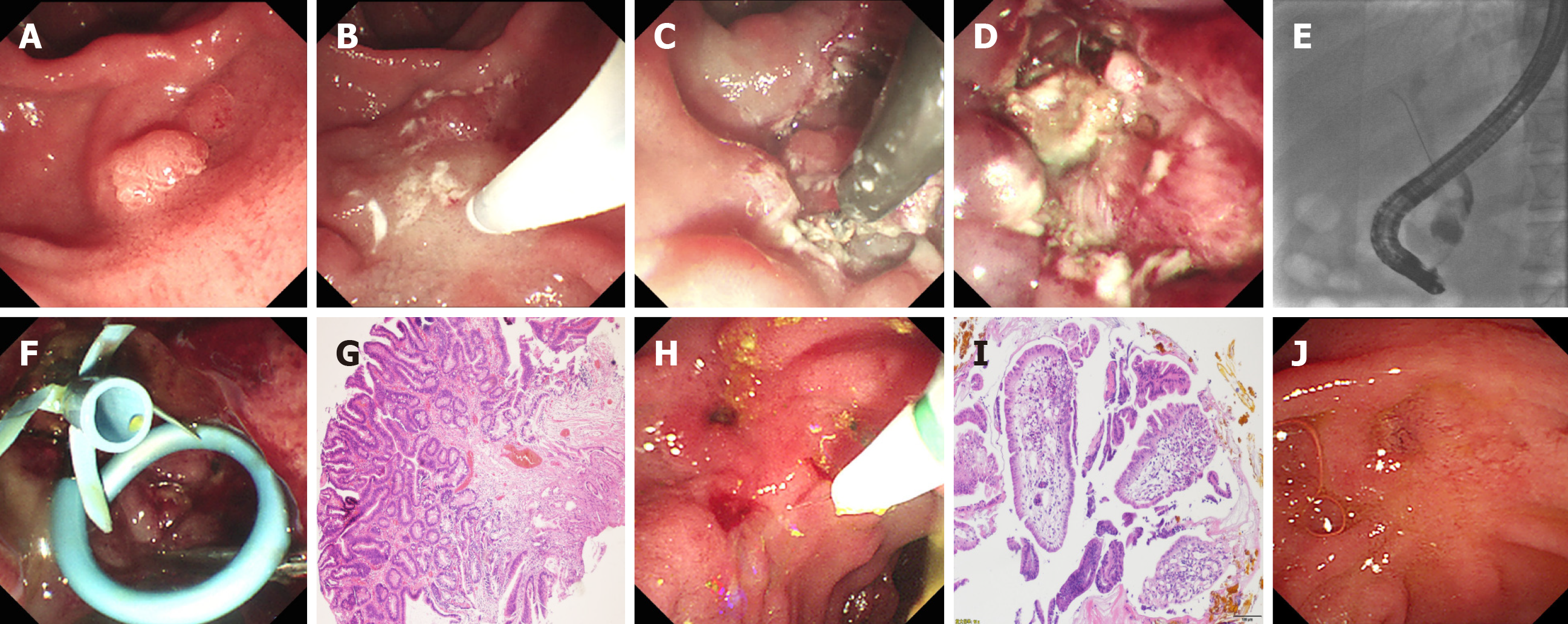Copyright
©The Author(s) 2020.
World J Gastroenterol. Oct 7, 2020; 26(37): 5673-5681
Published online Oct 7, 2020. doi: 10.3748/wjg.v26.i37.5673
Published online Oct 7, 2020. doi: 10.3748/wjg.v26.i37.5673
Figure 1 Endoscopic and pathological characteristics of case 1.
A-D: Hybrid endoscopic submucosal dissection (ESD) for recurrent, laterally spreading, duodenal papillary adenoma, including marks, submucosal injection and submucosal dissection. The lesion was resected completely using a polypectomy snare, and the artificial ulcer was visible; E: Endoscopic retrograde cholangiopancreatography (ERCP) showed the dilated biliary duct, common bile duct stones, and mildly dilated pancreatic duct; F: Biliary and pancreatic duct stents were implanted, and the endoscopic clips were used for closure of mucosal defects and prevention of complications; G: Hematoxylin and eosin stained resected specimen showing tubulovillous adenoma with a clean cutting edge, 4 ×; H: Endoscopic follow-up 3 mo after hybrid ESD, biliary stent and stones were extracted by ERCP; I: Histological follow-up of biopsy specimen revealed chronic and acute inflammation of small intestinal mucosa, 10 ×; J: Endoscopic follow-up 20 mo after hybrid ESD with no recurrence.
- Citation: Wang ZK, Liu F, Wang Y, Wang XD, Tang P, Li W. Preliminary experience of hybrid endoscopic submucosal dissection by duodenoscope for recurrent laterally spreading papillary lesions. World J Gastroenterol 2020; 26(37): 5673-5681
- URL: https://www.wjgnet.com/1007-9327/full/v26/i37/5673.htm
- DOI: https://dx.doi.org/10.3748/wjg.v26.i37.5673









